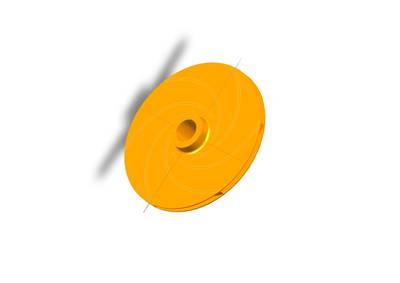Can 3D Printing Revolutionize Spare Parts Procurement?
Online e-procurement portal for marine spares and equipment ShipParts.com is taking part in a project to investigate how additive manufacturing, more commonly known as 3D printing, could revolutionize the way in which spare parts are procured and delivered.
ShipParts.com has been operating for some five years, and has built up a client base of more than 1,800+ buyers and around 17,000+ sellers actively trading on the platform. Sellers are from all corners of the globe, including European, American, Chinese, Japanese and Korean manufacturers and partners.
The company says that digitalizing procurement processes can cut order processing time for spare parts by 80%, a key consideration for the marine industry, where reducing off-hire time for ships is critical.
Roy Yap, ShipParts.com Chief Growth Officer, foresees an even greater saving of time in the near future with the growth of 3D printing technologies. “The technology has the potential to revolutionize the spares industry. Parts can be produced on demand, close to demand location, bypassing the time-consuming logistics, storage, shipping and customs procedures,” he says.
ShipParts.com does not intend to become a 3D printing company itself, but instead partner with existing and future specialists in or near ports around the world. So rather than ShipParts.com sourcing a part and sending it to the customer, it would provide secure digital files to a 3D printing specialist near to the customer, reducing logistics.
Yap refers to a ‘triangle’ of cost, quality and speed. Cost-wise, with current state of 3D printing technology an individual part made by additive manufacturing is more expensive than the equivalent off-the-shelf item – “but that will certainly change in the future,” he says. “3D printed parts will be of equivalent quality; the original data from which the part is manufactured is identical in both cases, and it is possible to use a wide variety of metals and alloys, as well as plastic-based materials, in the 3D printing process.
“Currently, logistics become involved, and that takes time,” says Yap. “If our manufacturers have to send a part, say from an origin factory, where it is made, to the destination port or shipyard, where the customer needs it, then there are costs involved. If we just send the secure data to a 3D manufacturing hub at the port or shipyard, where the data can be verified and the part produced, the customer can receive the parts within a much shorter lead time.”
Today, in particularly urgent cases, parts have to be sent by air freight. Yap says: “Cost is not an object in emergency cases, where a ship may be immobilized owing to a critical spare. The speedier response offered by 3D printing will improve uptime, improving revenue (charter hire) and reduce costs. We have over five years of data, so we know which parts are fast moving,” citing pump impellers as an example. “Pump impellers readily lend themselves to 3D printing.”
He says with a multitude of different sizes and designs, holding stock of a full range of impellers is not cost effective, but the ability to manufacture on demand means the right part can be available anywhere, quickly. It is fast-moving parts like these that show the most potential for 3D printing.
Size is not a problem. Yap cites a project at the University of Maine, which produced a 7.62-meter-long vessel using what is claimed to be the world’s largest 3D printed boat, using a plastic/wood fiber composite material.
Although this printing machine is only suitable for non-metallic parts, there is a lot of investment in the technology, which is developing rapidly. A “technology leap” in metallic 3D printing processes is anticipated by 2022, based on the current amount of investment and R&D.
While the question of intellectual property is bound to rise, Yap says the legal framework exists to protect digital files and drawings, though it hasn’t yet been fully explored in the 3D print world. But as 3D printing gains momentum, it will learn from existing copyright and patent protection laws.
“It will always be possible to produce ‘pirate’ parts, which a few unscrupulous channels might use, and 3D printing will not change that. The answer is to always use a reputable supplier.”
The parts offered through ShipParts.com are from genuine manufacturers and approved traders. This means that when 3D printing arrives, any data supplied by and downloaded from ShipParts.com will be guaranteed as genuine. “Our reputation depends on it,” he says.
There will be some early adopters, though most will wait and see how the market developed. Yap expects. But as the benefits become apparent, additive manufacturing is likely to progressively become the norm for a wide variety of spare parts and equipment. The benefits of manufacturing on-site will not only offer speed; not having to ship physical items will contribute to decarbonization.











